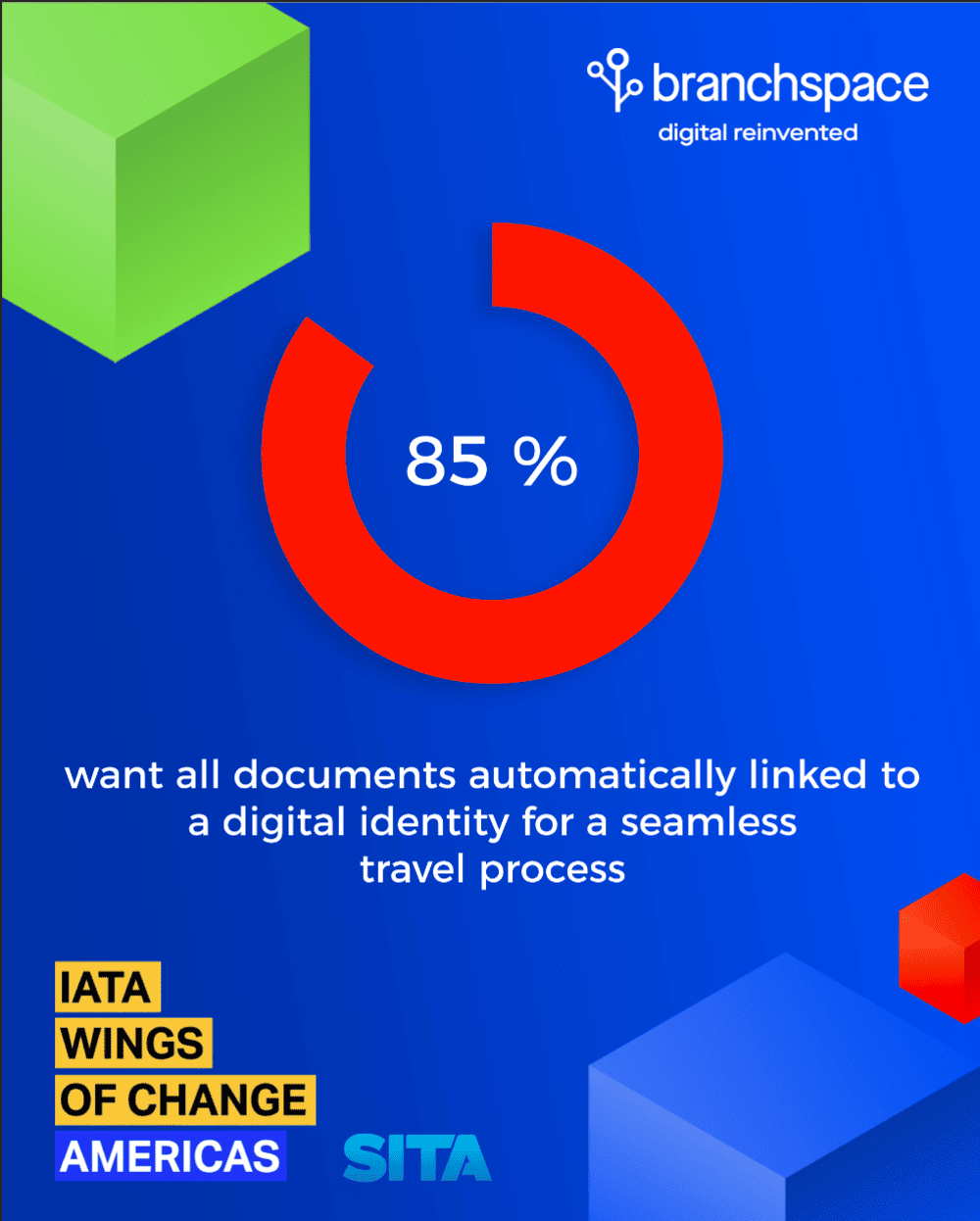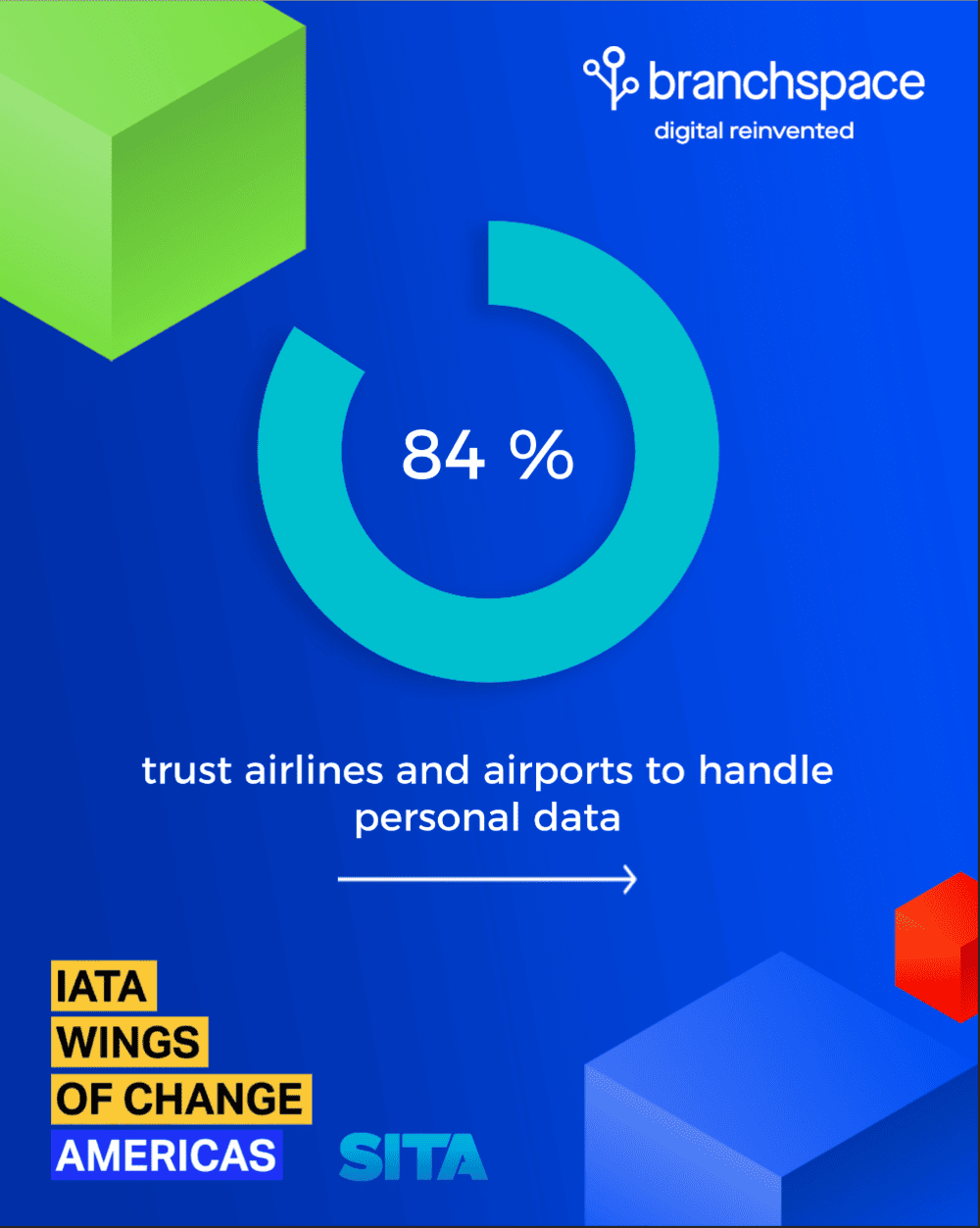What contactless travel really means
Contactless travel describes a frictionless journey from booking a flight to boarding the plane, powered by digital identity, biometrics, and contactless payments. Whether tapping a contactless card, using Apple Pay or Google Pay, or scanning a biometric face gate, this approach eliminates paper tickets, passport checks, and endless queues.
It all started with contactless card payments and mobile wallets. These days, having a bank card is enough to breeze through train gates. That technology laid the groundwork. But COVID-19 supercharged the shift. Airports and airlines rushed to adopt mobile check-in, self-service kiosks, QR codes, credit card payments at lounges, and contactless baggage drops to provide both safety and speed.
Now we’ve arrived at a point where passengers and travellers are much more conscious of their need for smoother journeys. In fact, in the recent IATA WOCA 2025 held in Colombia, a survey revealed that 85% of passengers want their documents linked to a digital pass.

Core trends outside aviation (that shape the skies)
Contactless travel didn’t spring up overnight. it came from global shifts in how people pay, interact, and move through public spaces. If you look closely, you’ll see that two key trends are converging to make the contactless airport experience not only possible but increasingly expected.
Surge in contactless payments: A foundational shift
The pandemic reset our expectations around hygiene and convenience. In April 2020, a Mastercard survey revealed that 82% of consumers perceived contactless payments as cleaner and safer, and 74% promised to keep using them after the pandemic. Nearly half even replaced their primary card with one that supports tap-to-pay, and among younger users the figure climbed to 52%.
Fast forward to 2023 and 25% of all card transactions in the U.S. were contactless, up from just 3% in 2017. That translated into nearly 18 billion contactless tap payments. Fuelled by 300 million compatible cards and 85% of merchants accepting them.
This surge in contactless payments set the scene. It taught consumers they could trust their devices and cards. That paved the way for contactless travel payments at kiosks, lounges, baggage drops, and boarding gates.
Self-service revolution: Technology meets expectation
With consumers now confident in tapping and waving devices to pay, attention turned to touchless interfaces everywhere. Airports, hotels, and transport providers raced to introduce self-service kiosks, smartphone check-in, digital room keys, baggage-tag printers and induction security trays.
What began as convenient extras evolved into frontline tools for safety and speed. This momentum means travellers routinely expect minimal friction and maximum transparency. They want to check in using their phone, pay via cards, and grab lounge access with a tap.
Why this matters for air travel
When these two trends meet at the airport, contactless travel becomes not just viable, but inevitable. Airports are already responding with:
- Wider rollout of contactless card readers at kiosks and gates
- Support for mobile payment apps in lounges and retail
- QR and NFC baggage tags that connect to your boarding app
- Expanding biometrics and API directory systems to sync identity and payment
These advancements are built on the back of growing consumer trust, where travellers feel more comfortable, and in fact expect airlines and airports to handle their data more effectively.

Contactless in air travel (where it really gets interesting)
A. Self-service and smart airport systems
Airports now offer mobile pre-check-in, contactless baggage tagging, security scanners with induction trays, and biometric e-gates. IATA’s One ID trials in Asia cut processing times, with close to 73% of passengers preferring face scans to handing over boarding passes or passports.
B. IATA’s digital identity and biometric initiatives
- One ID initiative: Aims at full digital journeys by letting travellers share credentials before departure and use face recognition at checkpoints. This shifts control and privacy to travellers
- Contactless Travel Directory: A global API repository that allows airlines and airports to discover available biometric and ID services, verify passenger eligibility, and ensure systems work together without new integrations per airport
C. AI-powered operations and automation
Artificial intelligence may operate in the background, but it’s essential to making contactless travel possible, convenient, and secure.
Predictive flow management
AI uses data from cameras, flight schedules, and kiosks to predict queue lengths and adjust staffing in real time. This prevents bottlenecks and ensures passengers move smoothly. Airports that use these tools report significant improvements in operational efficiency and passenger satisfaction.
Smarter kiosks & self-service
AI-enhanced kiosks can perform facial recognition, parse travel documents, and detect frazzled passengers, offering guidance as needed. These systems reduce check-in times to below 30 seconds, and 94 percent of airports now offer self-service kiosks.
Intelligent baggage handling
AI-driven baggage systems using RFID and machine learning track luggage end to end, adjust for congestion, and cut delivery times by around 25 percent, boosting both speed and reliability.
Enhanced security & boarding
AI assists biometric gates and surveillance systems to spot suspicious items or behavior. Facial-recognition boarding has cut boarding times by up to 20 percent, creating a faster and more secure passenger flow.
Why it matters for you
This AI-driven foundation is what makes contactless travel seamless:
- Your face becomes your boarding pass
- Your mobile wallet or contactless card works everywhere
- Your baggage is tracked and delivered efficiently
- Lines disappear and stress melts away
Branchspace’s role and IATA collaborations
Branchspace in collaboration with IATA has led the charge by turning these ideas into real experiences:
LHR to FCO demo: Together with British Airways and IATA, Branchspace executed a seamless journey. Travellers received personalised flight offers, had their documents checked via Timatic before leaving home, stored credentials verifiably, made contactless payments, and boarded using biometrics.
HKG to NRT trial: This trial truly tested the end-to-end concept: biometric liveness checks, mobile wallet storage of passport and visa credentials worked together to eliminate paper through the entire airport process.
Event Spotlight: IATA Data & Tech PoC #1 (Madrid, 2025)

We just kicked off this year’s IATA Proof of Concept series with a clear and ambitious goal: exploring the future of contactless travel through data-driven collaboration. Held from 10–12 June in Madrid, this first workshop marked the launch of a multi-stakeholder initiative aimed at making seamless digital identity journeys a reality, supported by biometrics, interoperable systems, and payment integration.
The event brought together leading airlines, airports, technology providers, and identity platforms to tackle the opportunities and challenges of a fully digital journey. And the energy in the room reflected an industry ready to move beyond theory and into tangible implementation.
“The IATA PoC on contactless travel in Madrid reflected the strong passenger demand for seamless journeys. It is great to see the industry’s commitment to advancing digital identity to meet this demand, while also recognising the ongoing challenge of protecting privacy, ensuring systems work together, and complying with regulations as we move forward.”
— Thassia Vaz, Sales Operations, Branchspace
Building on Momentum
This year’s PoC builds on the success of previous landmark initiative, where Branchspace collaborated with IATA, British Airways, Cathay Pacific and other partners to deliver the first integrated shopping-to-travel journey using digital identity. That Proof of Concept demonstrated how a traveller could book a flight, check Timatic requirements, receive digital credentials, and board using just their face. No boarding pass or physical ID required.
🎥 Watch the video recap here:
That PoC showed what’s possible. This year, the focus shifts to scaling and validating these journeys across a more complex, international network of routes and systems.
What This Year’s PoC Will Cover
The current PoC will test end-to-end interoperability between multiple airlines, airports, and wallet types. Several real-world travel paths are being scoped. Each route represents a complex, multi-airport experience, perfect for testing biometric matching, digital identity sharing, and wallet compatibility across jurisdictions.
Travellers in the PoC will carry a pre-issued digital identity stored in one of three supported wallet types:
- Embedded wallets inside airline apps
- Native device wallets such as Apple Wallet, Google Wallet, Samsung Pass, EUDI, or DigiYatra
- Standalone wallets from specialised providers like Neoke and Facephi
The infrastructure will support both 1:1 and 1:n biometric matching, and temporary storage mechanisms will be in place to handle disruptions. These safeguards ensure both security and resilience throughout the journey.
A Three-Stage Global Rollout
The Madrid session is just the beginning. The PoC will continue in three key stages throughout the year. Between each meeting, cross-functional subgroup calls are developing technical blueprints, data standards, and UX flows. The ultimate goal is to deliver a fully demonstrable digital journey at the IATA World Data Symposium in 2026, showing that a secure, contactless travel experience can operate across borders, carriers, and systems.
6. Wrap-up: where are we headed?
At this point, contactless travel is far beyond theory. With biometrics, AI, interoperable APIs, contactless cards, the future of air mobility is fast, smooth, and secure.
Branchspace is delivering the technology stack that makes this not just possible but personal and scalable. The next few years, driven by events like IATA’s PoC should see this go from trial to everyday reality. With commercial rollouts expected from 2026 onwards.
In short, whether you're carrying a bank card, a prepaid card, or paying via your phone, contactless travel promises freedom. And when your face is your ticket, who could ask for anything more?

